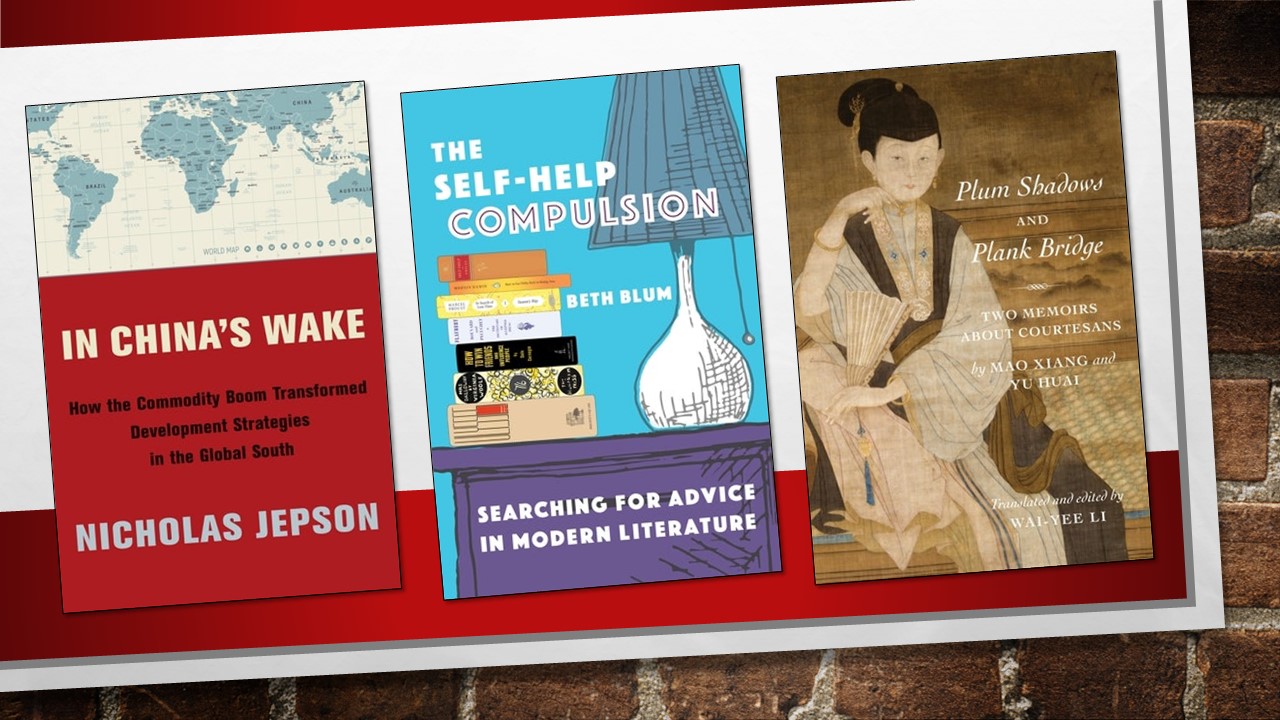An Interview with Jeanne Guillemin
In Biological Weapons: From the Invention of State-Sponsored Terrorism to Contemporary Bioterrorism, Jeanne Guillemin explores the problems biological weapons pose for contemporary policymakers and public officials, particularly in the United States. nnQuestion: What major nations pioneered the offensive use of biological weapons against civilians?nnJeanne Guillemin: In 1922 France, fearful of German air power, used its brilliant legacy in microbiology to develop the first biological weapons program. In 1940, the British, under attack by German bombers, instituted their own biological weapons program and created the first working anthrax bomb. Following the attack on Pearl Harbor, the United States established the prototype for mass production of biological bombs and, along with Canada, began to expand testing and attack simulations. During the Cold War, the US also intensified its development of germ warfare to its most ambitious, strategic level, which culminated in the building of large production facilities and the testing of biological weapons on land and sea. This effort lasted until 1969, when President Richard Nixon terminated the program.nnQ: What is the state of these programs today?nnJG: The major state biological warfare programs of the 21st century are now fundamentally over. In the 1960s, the UK and France acquired nuclear weapons and then ended their biological weapons programs: one kind of weapon of mass destruction was enough. Nuclear weapons had been used to massive effect, so their power was understood. Most nations of the world signed the 1972 Biological Weapons Convention against any such programs. The Soviet Union, a depository nation for that treaty, then secretly created a new, modern version of its offensive program, which terminated in 1992 when the USSR collapsed.nnQ: Which countries are likely possess biological weapons today in violation of international law?nnJG: Israel, South Africa, and Iraq secretly pursued development of their own biological weapons programs, in imitation of the major nations. In the last decade, some sources have listed as many as 12 other nations that might be threats. Recently Libya, one of these “rogue nations,” as they were tagged by the US, was revealed not to have biological weapons, although it did pursue chemical and nuclear weapons. Biological weapons are complex and require considerable resources, for example, a range of scientists and production facilities. In today’s world, keeping such a program secret has become much more difficult than forty or fifty years ago. At the same time, new biotechnologies could make biological weapons attractive again, for nations that sought, for example, to subject entire populations.nnQ: What about civilian populations? Have they ever been targeted by biological weapons?nnJG: First, the concept of the enemy civilian as a target was an essential component of all the biological weapons programs undertaken by all countries. The doctrine of total war which arose in the early 20th century provided the rationale for destroying enemy cities and industrial centers. Carpet bombing in World War II was an example of this rationale applied in air warfare. During the Cold War, the US targeted Soviet cities for potential germ attacks as well as for nuclear attacks, but without much evidence that the USSR had a biological warfare capability. During the Vietnam Conflict, in a frenzy of elaborate simulations, the US military secretly expanded the destructive capabilities of its biological weapons program to be able to inflict severe damage on virtually every terrain and population in preparation for potential total war against non-industrial enemies. As for the actual use of biological weapons, in the 1930s, unknown to the rest of the world, the Japanese Imperial Army in Manchuria developed crude biological weapons and then in the early 1940s actually used them against unsuspecting Chinese civilians.nnQ: What has been the role of scientists? Have they been involved in offensive and defensive programs?nnJG: The offensive programs not only relied on microbiologists and physicians but were often started by them. In the French program, medical scientists at various Pasteur Institutes were involved until the German invasion in 1940. In Canada, Nobel laureate Sir Frederick Banting, the co-discoverer of insulin, was a surprisingly strong advocate for the use of biological weapons against German industrial centers and cities. His 1939 plan was full of ingenuity and foresight, including speculation that microbes might be sent by mail by saboteurs. In addition, two American scientists from Columbia University, Theodor Rosebury and Elvin Kabat, were of particular interest to me. In 1942, they wrote a modern, comprehensive plan designating dangerous agents and how to defend against them. They then became part of the US program. After the war, Rosebury left the program and was one of the few who spoke out against biological warfare programs. Later he wrote his classic book Peace or Pestilence, which questioned the military appropriation of microbiology for the development of those programs.nnQ: Biological weapons have been deployed very rarely, what do you think restrained their use?nnJG: One factor was technical obstacles. Germ agents were difficult to disseminate and their effects were difficult to predict. A second factor was the influence of national leaders who spoke out against them. Adolph Hitler, for example, refused to allow enthusiastic military microbiologists to develop such a program. Roosevelt was also repulsed by the idea of biological weapons use, as was Admiral William Leahy, his chief military advisor. Later, in 1969, Richard Nixon concluded that nuclear weapons were a sufficient deterrent to foreign aggression and renounced biological weapons for the US. A third restraint was public protest. In the UK and the US in the 1960s, protests against chemical weapons use by the US in Vietnam soon generalized to include protests against the development of biological weapons. A fourth restraint, which we should not underestimate, was international treaties that embodied widely-held taboos. The 1925 Geneva Protocol embodied the norm against the use of poisons, chemical and biological, in warfare. In 1972, the Biological Weapons Convention banned the biological weapons programs, that is, their development, production, stockpiling, and possession, including the agents and the means for their dissemination.nnQ: How do you think the US government is faring today with respect to biological weapons? Could an attack occur? What is the importance of civilian biodefense?nnJG: The major historical change in the US lately is a shift toward civilian biodefense, as with Project Bioshield and research on what are called “select agents” for diseases like anthrax, smallpox, tularemia, and the Ebola virus. All but a few nations have agreed not to use or make biological weapons and yet, since the anthrax postal attacks in 2001, billions of dollars have been invested to protect Americans against bioterrorism. The psychological fear of pandemics makes all of us vulnerable to arguments that we need an array of technological defenses, from vaccines and antibiotics to antiviral medicines. We are also attempting to cordon off US biotechnologies from prospective terrorists so that they cannot surprise us with some new agent. With all this emphasis on terrorists, we can forget that states still play a major role in improving international security in this area. The biomedical sciences are international, with heightened prospects for technology transfer and for military exploitation, as in the past, if secret projects and programs are allowed. We very much need international cooperation to make sure that scientific innovations in the life sciences are openly reviewed and used exclusively for universal, humane purposes.nnQ: What needs to be done to prevent the future use of biological weapons?nnJG: What is clear to me is that the best safeguard against the reemergence of biological weapons as a serious threat is the promotion of as much transparency and oversight as the various state systems will bear. The military and intelligence agencies will undoubtedly protest such openness. But, when it comes to public health response, the safety of all civilians depends on their knowing, on our knowing, the nature of the disease threat and how we can act against it. Secrecy and ignorance can only harm those at risk: how much better it would have been if in October 2001 the US government had frankly told postal workers about the risks of weaponized anthrax spores, instead of leaving them exposed to a lethal disease.nnI end my book with a quote from the late Senator Daniel Patrick Moynihan, who identified openness as a particularly American characteristic and the best way to restrain the development of weapons of mass destruction. It is time we began thinking of clear and effective restraints on biological weapons, which could be as destructive as nuclear arms, if we allow them to be.






